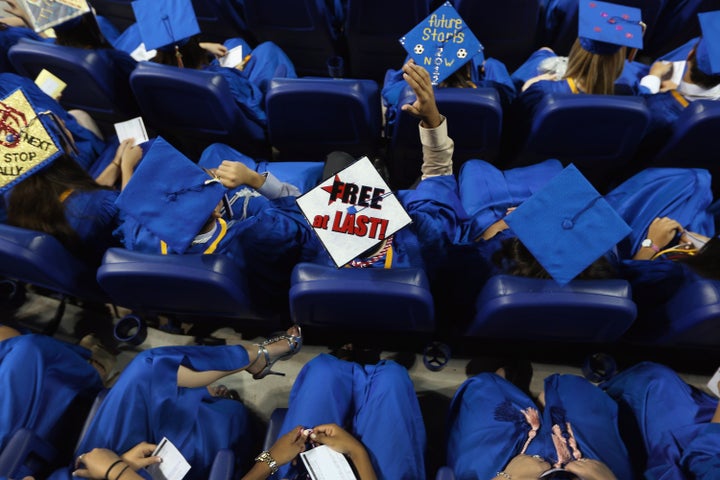
Higher levels of immigration increased high-school graduation rates among native-born children, particularly among black students, according to economist Jennifer Hunt’s new paper for the National Bureau of Economic Research.
She writes: “An increase of one percentage point in the share of immigrants in the population aged 11-64 increases the probability that natives aged 11-17 eventually complete 12 years of schooling by 0.3 percentage points, and increases the probability for native-born blacks by 0.4 percentage points.”
Hunt attributes the increase to native-born children having more of an incentive to complete school so as to avoid competing with less-educated immigrants for low-skill jobs, the Washington Post reports.
On the other hand, she found that the high-school completion rates of native-born Hispanics decline with higher levels of immigrants, writing, “Hispanics are the native group living in school districts with the most immigrants, and black and Hispanic males have the lowest native graduation rates, so it is not surprising that native Hispanic males are most sensitive to child immigration. The relatively large negative effect on native Hispanic males of child immigrants of poorly educated parents may be an indicator that native students are most affected in school when exposed to culturally similar immigrants.”
Hunt goes on to say that native Hispanics increase their 12-year completion rates in response to European, Canadian, Australian and New Zealand immigrants, while blacks do not. This suggests, she says, that the explanation can be in part related to similarity between native and immigrant Hispanics, or differential exposure to immigrant children of higher socioeconomic status -- since native blacks and Hispanics have similar exposure to white non-Hispanic immigrant children.
Hunt contends that because some native-born minorities are negatively affected by some child immigrants, there is a need for reform in accommodating immigrant students, especially those with less educated parents and those who attend schools with many native-born minorities.
According to a report released in March by the Alliance for Excellent Education, America’s Promise Alliance, Civic Enterprises and the Everyone Graduates Center at Johns Hopkins University, there was a modest 3.5 percentage point increase in high school graduation rates nationwide between 2001 and 2009. However, data from the report also indicated that only 65.9 percent of Hispanic students are graduating on time from high school, compared to 82 percent of white students.
Hunt's study also comes after President Barack Obama called for states to raise the minimum age at which students are permitted to drop out of high school -- a proposal that only one state has embraced by raising the age to 18.
A report last fall also revealed that the high school dropout rates for minority and poor students is disproportionately high. There were about 3 million 16- to 24-year-olds in October 2009 who were neither enrolled in high school nor had earned a high school diploma or alternative degree. These dropouts accounted for 8.1 percent of the 38 million U.S. noninstitutionalized and civilians in that age group not in high school and without a high school credential.